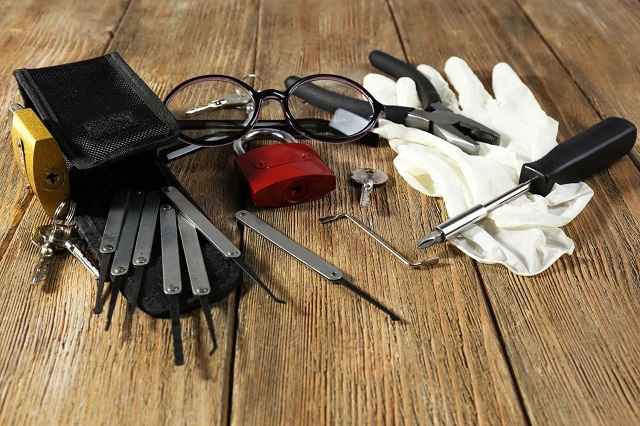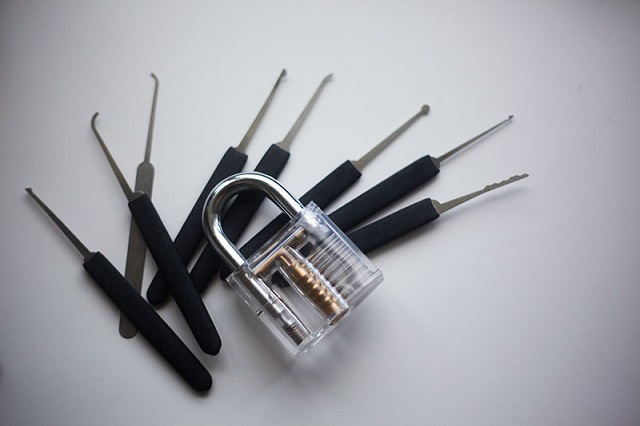How to Choose the Best Lock Picks
2024-09-19 10:14

Lock picking is a skillful practice that requires the right tools to be effective. Whether you are a hobbyist, locksmith, or simply interested in learning this art, selecting the best lock picks is essential. A quality set not only makes the learning process easier but also allows for more efficient lock manipulation. This guide will walk you through the key factors to consider when choosing the best lock picks for your needs.
1. Understand Your Purpose
Before diving into the selection process, it's crucial to understand your reason for acquiring lock picks. Are you a locksmith, security professional, or someone who enjoys lock picking as a hobby? Your purpose will significantly influence the type of lock picks you should invest in.
For Hobbyists: If you are just starting out, a basic set with essential picks, such as hooks and rakes, is a good starting point. It allows you to experiment with different locks without the need for a large variety of tools.
For Professionals: Locksmiths and security experts often require a more extensive selection, including specialty picks like half-diamonds, ball picks, and tension wrenches. Durability and versatility are key for professional use, so higher-quality, robust materials are a must.

2. Types of Lock Picks
Understanding the different types of lock picks available will help you choose the ones best suited to your skill level and the locks you intend to work with. Here are some of the most common types:
Hooks: Ideal for single-pin picking, hooks are used to manipulate individual pins inside a lock. They come in various sizes and shapes, from short to deep hooks. Beginners often start with a standard hook, while advanced pickers may prefer a range of hook styles for different situations.
Rakes: These are designed to quickly set multiple pins at once, making them perfect for raking locks. Rakes come in various shapes, such as the snake rake and Bogota rake, and are generally easier for beginners to use.
Half-Diamonds: Versatile picks that can be used for both single-pin picking and raking. They are especially useful for picking wafer and pin tumbler locks.
Ball Picks: Designed mainly for tubular locks, ball picks feature rounded ends to manipulate specific types of lock mechanisms. They are specialized tools typically used by professionals.
Tension Wrenches: While not a pick itself, a tension wrench is an essential tool in any lock pick set. It applies rotational pressure to the lock cylinder, allowing the pins to be manipulated correctly.
3. Material Matters
The material of your lock picks greatly affects their durability, flexibility, and performance. When choosing the best lock picks, consider the following materials:
Stainless Steel: Most high-quality lock picks are made from stainless steel due to its strength, durability, and resistance to bending or breaking. Stainless steel picks are suitable for both beginners and professionals, offering a reliable balance of flexibility and rigidity.
Spring Steel: A bit more flexible than stainless steel, spring steel picks are ideal for more delicate lock mechanisms. However, they can wear down more quickly with frequent use.
Titanium: For those looking for the best in terms of durability and weight, titanium picks are a premium option. They are lightweight and incredibly strong, though they come at a higher price.
4. Thickness and Size
The thickness and size of lock picks are crucial factors that affect their usability. Lock pick sets typically come in varying thicknesses, commonly ranging from 0.015 inches (slimline) to 0.025 inches (standard).
Slimline Picks: These are thinner and more flexible, making them ideal for narrow keyways and more delicate locks. They are favored by experienced pickers who need to navigate complex lock mechanisms.
Standard Picks: Thicker picks provide more strength and are suitable for wider keyways. Beginners often start with standard picks, as they are less likely to bend or break with improper use.
Set Variety: A comprehensive set includes picks of different sizes and thicknesses to handle a wide range of lock types. Consider investing in a set that offers a mix of slimline and standard picks to cover various scenarios.
5. Ergonomics and Comfort
Using lock picks for extended periods can be challenging if they are not ergonomically designed. Look for lock picks with handles or grips that provide comfort and ease of use. Picks with a rubber or plastic coating can reduce finger fatigue, especially during longer lock-picking sessions.
For professionals, ergonomic handles are particularly important as they allow for precise control and reduce the risk of slipping. Some high-end lock picks even feature custom-shaped handles that conform to the natural grip of the hand, providing maximum comfort.
Conclusion
Choosing the best lock picks involves understanding your purpose, selecting the right types of picks, and considering factors such as material, thickness, and ergonomics. For beginners, a basic set with a few versatile picks is a great starting point, while professionals should invest in high-quality, comprehensive sets to handle a variety of locks. Remember, the right tools combined with consistent practice will help you master the art of lock picking efficiently and effectively.
 Promotion: 5% Discount Code: 5vip
Promotion: 5% Discount Code: 5vip